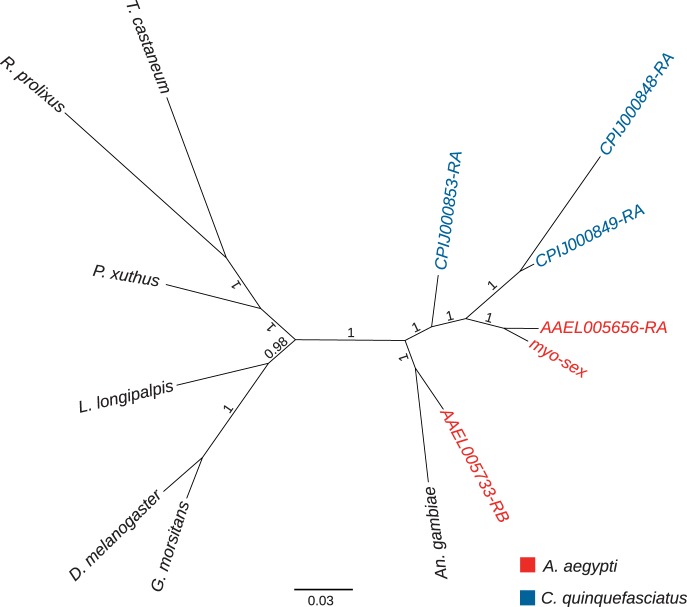Fig. 5.—
The phylogeny of myo-sex and other myosin heavy genes in insects. The phylogeny suggests that both myo-sex and AAEL005656 originated after the evolutionary divergence of Aedes and Culex mosquitoes. The protein IDs for the genes represented in the phylogeny are as follows: A. aegypti (AAEL005656-PA), A. aegypti (AAEL005733-PB), C. quinquefasciatus (CPIJ000848-RA), C. quinquefasciatus (CPIJ000849-PA), C. quinquefasciatus (CPIJ000853-PA), Anopheles gambiae (AGAP010147-PA), Rhodnius prolixus (RPRC012274-PA), Tribolium castaneum (XP_001814139.1), Glossina morsitans (GMOY005703-PA), Drosophila melanogaster (FBpp0080463), Lutzomyia longipalpis (LLOTMP009501-PA), and Papilo xuthus (BAG30740.1). We note that the current CPIJ000853 protein model in Vectorbase lacks approximately 350 residues at the N-terminus and contains a 200 residue insertion compared with other proteins in the alignment (supplementary file S2, Supplementary Material online). A semimanual reannotation of the CPIJ000853 genomic sequence recovered a protein sequence that is 94% identical to AAEL005733 (supplementary file S1, Supplementary Material online). The reannotated CPIJ000853 grouped together with AAEL005733 with credibility value of 1 in the new phylogeny (not shown).

